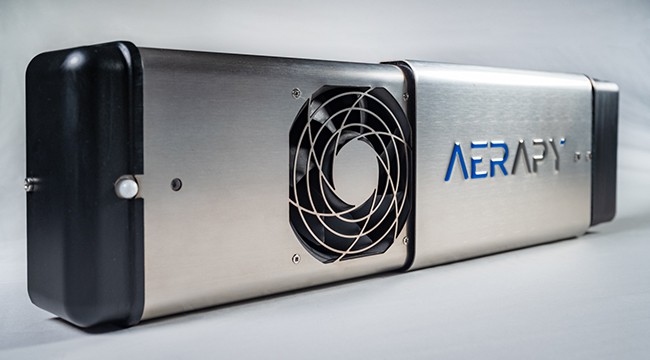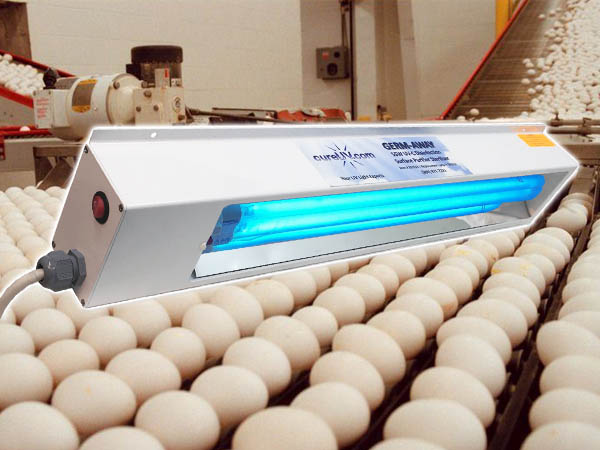UV Surface Disinfection Demystified: Comprehending the Scientific Research Behind the Option
UV Surface Disinfection Demystified: Comprehending the Scientific Research Behind the Option
Blog Article
Discovering UV Disinfection: A Necessary Device in the Battle Versus Dangerous Microorganisms
As the world faces an ever-increasing threat from harmful pathogens, the look for effective methods of disinfection has actually become an urgent top priority. While standard cleaning methods have actually revealed some success, there is a growing acknowledgment that we need to check out ingenious strategies to combat these invisible enemies. One such strategy that has amassed considerable focus is UV sanitation. Taking advantage of the power of ultraviolet light, this innovation has actually demonstrated appealing results in removing a wide variety of microorganisms. Just how does it function? What are the advantages? And where can it be used? In this conversation, we will certainly look into the world of UV sanitation, revealing its prospective as a necessary tool in the battle against damaging virus.
Exactly How Does UV Sanitation Job?
UV disinfection functions by making use of ultraviolet (UV) light to eliminate damaging microorganisms and stop their spread. This very effective method includes the usage of UV radiation to disrupt the DNA and RNA of microorganisms, making them not able to reproduce and triggering their best destruction.
When UV light is utilized for disinfection, it is commonly discharged from a light or light bulb that generates a details wavelength of UV-C light. uv surface disinfection. This wavelength, ranging from 200 to 280 nanometers, is particularly effective at penetrating the external cell wall of bacteria, viruses, and other microorganisms. As soon as inside the cell, the UV radiation targets and damages the genetic material, preventing the microorganism from reproducing and causing infection
UV sanitation systems are created to discharge the ideal strength and period of UV light to guarantee effective pathogen elimination. The dose of UV light needed for sanitation depends on factors such as the kind of microbe, its resistance to UV radiation, and the details application. Furthermore, the system needs to be very carefully engineered to guarantee proper exposure of the target pathogens and to avoid any kind of prospective injury to humans or the setting.
The Benefits of UV Sanitation
UV sanitation offers a multitude of advantages in efficiently removing dangerous virus and minimizing the threat of infection. One of the key advantages of UV sanitation is its ability to give a eco friendly and chemical-free solution. Unlike standard disinfection techniques that count on chemicals, UV sanitation utilizes ultraviolet light to ruin the DNA and RNA of microbes, rendering them not able to recreate and cause infections. This chemical-free technique makes sure that no dangerous residues are left, removing any type of prospective health dangers linked with chemical disinfectants.
Another considerable advantage of UV sanitation is its performance in killing a wide variety of virus. UV light has actually been proven to efficiently remove germs, viruses, fungi, and protozoa, consisting of those that are immune to standard anti-bacterials. This broad-spectrum effectiveness makes UV disinfection a functional tool in different setups, such as health care centers, water treatment plants, and food processing sectors.
In enhancement to its efficiency, UV sanitation additionally offers rapid disinfection cycles. Unlike other methods that call for extended get in touch with times or repeated applications, UV disinfection can achieve considerable microorganism reduction in a matter of seconds. This fast and efficient procedure permits enhanced productivity, lowered downtime, and boosted total operational effectiveness.
Moreover, UV disinfection is a non-contact method, which indicates that it does not call for straight physical contact with the surfaces or things being sanitized. This attribute makes it suitable for use on delicate devices and sensitive products that may be damaged or affected by various other disinfection methods.
Applications of UV Disinfection in Healthcare

UV sanitation is also made use of in the sanitation of medical tools and tools (uv surface disinfection). The high intensity of UV light can effectively eliminate microorganisms, viruses, and various other microorganisms, ensuring that medical devices are totally free and safe from pollutants. Additionally, UV disinfection is this utilized in water treatment systems within medical care centers. UV light can inactivating unsafe microorganisms, infections, and parasites, making the water secure for usage and lowering the threat of waterborne infections.
Additionally, UV disinfection technology is used in the disinfection of healthcare attires and personal safety tools (PPE) By utilizing UV light, health care experts can guarantee that their uniforms and PPE are devoid of pathogens, avoiding the transmission of infections in between individuals and health care workers.
UV Sanitation in Public Spaces
Public spaces are increasingly carrying out UV disinfection modern technology as a vital action to fight the spread of hazardous pathogens. With the continuous international pandemic and the constant danger of contagious illness, the demand for effective sanitation approaches in public areas has come to be critical. UV sanitation offers a efficient and reliable service in this respect.

UV disinfection systems make use of ultraviolet light to deactivate the DNA and RNA of bacteria, viruses, and other virus. This process interrupts their ability to replicate and render them safe. These systems can be installed in various public spaces, including heating and cooling systems, escalators, lifts, and surface area disinfection robotics. The usage of UV disinfection innovation in public spaces not just helps in reducing the risk of infection but also instills self-confidence among the public concerning their safety.
As public rooms proceed to adapt to the obstacles positioned by contagious illness, UV disinfection innovation plays a crucial function in making sure a safe and tidy atmosphere. By applying such actions, public spaces can efficiently minimize the spread of dangerous pathogens and add to the total health of the neighborhood.
The Future of UV Sanitation Technology
As the demand for enhanced sanitation methods remains to grow in feedback to the recurring worldwide pandemic and the continuous hazard of infectious conditions, the future of UV disinfection technology holds promising developments in making certain a lot more reliable and efficient virus removal in various resource setups.

One location of innovation is the development of more portable and compact UV sanitation devices. Furthermore, improvements in automation and robotics are being checked out to improve the performance and performance of UV disinfection procedures.
One more area of exploration is making use of UV sanitation in air purification systems. By incorporating UV-C lights into cooling and heating systems, air-borne microorganisms can be successfully counteracted, decreasing the threat of transmission in indoor settings.
In addition, researchers are investigating the usage of UV disinfection in food processing facilities to make sure the safety and top quality of food items. UV-C light has actually been found to be reliable in eliminating foodborne pathogens, supplying a chemical-free choice to traditional disinfection approaches.
Conclusion
In verdict, UV disinfection is an essential tool in the battle versus dangerous virus. Its efficiency in killing germs, viruses, and various other microbes makes it an important innovation in health care setups and public rooms. With its capacity to supply a chemical-free and eco friendly technique of disinfection, UV technology holds terrific official source possible for the future. Its widespread execution can add to the avoidance of infections and the renovation of public wellness.
UV sanitation systems are created to emit the proper intensity and duration of UV light to make certain effective virus removal. The dose of UV light needed for sanitation depends on variables such as the type of bacterium, its resistance to UV radiation, and the particular application. Unlike standard sanitation methods that count on chemicals, UV disinfection makes use of ultraviolet light to destroy the DNA and RNA of microbes, rendering them unable to reproduce and cause infections.In enhancement to its effectiveness, UV disinfection additionally uses quick disinfection cycles. One of the major applications of UV disinfection in medical care is in the sanitation of individual rooms and running cinemas.
Report this page